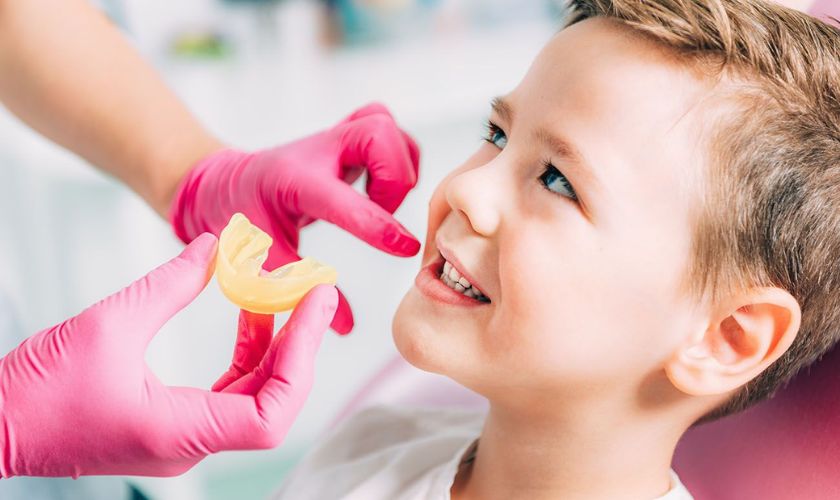Are you tired of the tears, tantrums, and anxiety that come with taking your child to the dentist? As a parent or caregiver, it can be difficult to watch your little one experience fear and discomfort during dental procedures. But what if we told you there was a revolutionary solution that could ease their worries and make trips to the dentist a breeze? Enter oral conscious sedation – a game-changing technique in pediatric dentistry that is transforming the way children undergo dental treatments. Say goodbye to dental anxiety and hello to stress-free smiles – let’s explore how oral conscious sedation is changing the game for young patients everywhere.
What Is Oral Conscious Sedation?
Oral Conscious Sedation (OCS) is a form of sedation used in pediatric dentistry to help ease the anxiety and fear of children during dental procedures. It involves administering medication through the mouth, which produces a state of relaxation while still allowing the child to remain conscious and able to communicate.
The medications used for OCS include benzodiazepines, such as Valium or Halcion, which have calming effects on the body. These medications are safe when administered properly by a trained dentist who has experience with pediatric patients.
OCS is especially beneficial for children who have had negative experiences at previous dental appointments or suffer from anxiety disorders. By inducing a relaxed state, OCS can make it easier for them to tolerate even complex dental procedures without experiencing any distress.
Another advantage of OCS is that it allows dentists to perform multiple treatments in one appointment instead of spreading them out over several visits. This saves time and reduces stress for both parents and their children.
Oral Conscious Sedation can be an effective solution for reducing dental anxiety in kids, making necessary treatment more accessible and tolerable.
The Benefits Of Oral Conscious Sedation For Pediatric Dentistry
Oral conscious sedation is becoming increasingly popular as an option for parents who want their children to have a stress-free dental experience. There are several benefits of using oral conscious sedation in pediatric dentistry.
Firstly, it helps reduce anxiety and discomfort during dental procedures. Children often find the sounds, smells, and sensations associated with dental work overwhelming, which can make them feel anxious or scared. Oral conscious sedation can help them relax and calm down so that they do not feel any pain or discomfort.
Secondly, oral conscious sedation allows children to undergo multiple procedures at once. This means fewer visits to the dentist’s office, saving both time and money for busy families.
Thirdly, this type of sedation can also be helpful for children with special needs or those who struggle with sitting still for long periods. It enables them to receive necessary treatments without feeling distressed.
By reducing anxiety levels in young patients during their appointment times at the dental clinic through oral conscious sedative techniques; it helps foster positive attitudes towards future appointments leading to better overall health outcomes over a lifetime.
There are numerous benefits of using oral conscious sedation in pediatric dentistry including reduced anxiety levels amongst young patients thus making trips to the dentist more enjoyable for all involved parties while fostering better lifelong habits surrounding oral hygiene health practices that lead ultimately lead to happier healthier lives free from unnecessary harm caused by untreated medical conditions like cavities that could develop into larger problems if left unchecked over time.
How Oral Conscious Sedation Works
Oral conscious sedation is a form of mild sedation that helps children relax during dental procedures. It works by administering medications such as nitrous oxide and benzodiazepines, which help reduce anxiety and promote relaxation.
Nitrous oxide, also known as laughing gas, is administered through a small mask placed over the child’s nose. The gas takes effect quickly and wears off just as fast once the procedure is complete.
Benzodiazepines are taken orally in pill or liquid form before the appointment. These medications have a longer-lasting effect than nitrous oxide and can cause drowsiness, making them ideal for more lengthy procedures.
During oral conscious sedation, your child will remain awake but relaxed throughout their dental treatment. They will be able to respond to instructions from their dentist but may not remember much about their time in the chair.
It’s essential to note that oral conscious sedation should only be administered under close supervision by a trained professional. Your pediatric dentist will monitor your child’s vital signs throughout the procedure to ensure safety and comfort at all times.
Oral conscious sedation can make dental visits less daunting for both children and parents alike by providing an effective solution for anxiety management during appointments.
The Procedure For Oral Conscious Sedation In Pediatric Dentistry
The procedure for oral conscious sedation in pediatric dentistry involves several steps to ensure the safety and comfort of the child.
First, a thorough medical history is taken to identify any potential risks or contraindications for sedation. The dentist will also discuss with the parent or guardian any concerns they may have and explain how oral conscious sedation works.
On the day of the appointment, the child is given a small pill to swallow which will help them relax and become drowsy. They mustn’t eat anything before this appointment so that it can be effective.
Once the medication takes effect, the child will feel calm and relaxed but still awake enough to respond if needed. The dental team will monitor their vital signs throughout the procedure to ensure everything is going smoothly.
During treatment, various techniques may be used such as nitrous oxide (laughing gas) or local anesthesia injections. After completion of treatment, children are monitored until they are alert enough to go home with an adult who can supervise them for several hours after leaving our office.
Oral conscious sedation allows children who suffer from dental anxiety or other special needs conditions to receive high-quality dental care without fear or discomfort.
What To Expect After The Procedure
After the procedure, it is common for children to feel drowsy or groggy due to the sedation medication. It’s important to make sure your child is comfortable and safe while they recover from the effects of sedation.
It’s recommended that parents or guardians remain with their child during this time until they have fully recovered. Your dentist may also provide specific post-operative instructions such as avoiding solid foods for a certain amount of time, drinking plenty of fluids, and avoiding physical activities such as sports.
Your child may experience some side effects after oral conscious sedation such as nausea, vomiting, headaches, or dizziness. These side effects are typically mild and short-lived but it’s important to inform your dentist if any persist.
Your child should be able to return home on the same day following the procedure although they may need some additional rest before resuming normal daily activities. Some children may require follow-up appointments depending on their individual case and recovery process.
Aftercare plays an important role in ensuring a smooth recovery after oral conscious sedation. By following these guidelines and communicating closely with your dental team, you can help ensure a positive outcome for your child’s pediatric dentistry experience.
Finishing Off
Oral conscious sedation is a game-changer in pediatric dentistry. This safe and effective method helps children overcome their dental anxiety, allowing them to receive necessary treatments without fear or discomfort. With this innovative approach, parents can rest easy knowing that their child is in good hands during dental procedures.
Parents should feel free to ask their dentist about the use of oral conscious sedation for their child’s next visit. By taking advantage of this revolutionary technique, parents can ensure better dental health for their kids and a more positive experience overall. Say goodbye to dental anxiety with the help of oral conscious sedation – the future of pediatric dentistry.
Oral Conscious Sedation is a safe and effective treatment used in pediatric dentistry. It helps increase the cooperation of the kids and reduces anxiety and discomfort during dental treatment.
The effects of oral conscious sedation last for about 1-2 hours. However, the sedation can be extended if the patient needs it for a longer period.
Most children find the dental procedure very painless. Most pediatric dental offices use a numbing agent which often helps make the child less anxious. Sedation is available in two forms, local or general anesthesia. General anesthesia usually results in a deeper sleep and is more likely to result in longer-term side effects such as memory loss or impaired coordination. Local anesthetics are injected into the area around the teeth and often cause less anxiety and discomfort than general anesthesia.








